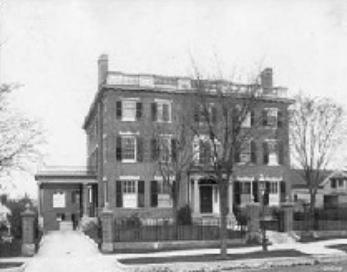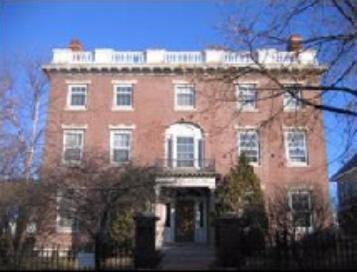Overview
The Elbert Carpenter House was built for a prominent businessman on a bluff near Loring Park.
- Location: 314 Clifton Avenue
- Neighborhood: Loring Park
| 1910 | 2006 |
|---|---|

|

|
The Elbert Carpenter House was built for a prominent businessman on a bluff near Loring Park.
| 1910 | 2006 |
|---|---|

|

|
The Elbert Carpenter House was built for a prominent businessman on a bluff near Loring Park. Elbert moved from Illinois to Minneapolis in 1887 to manage his father’s lumber business. He married Florence Welles in 1890. His son, Eugene Carpenter, then joined his company in 1889. By 1915, Elbert owned a lumber and milling business called Shelvin, Carpenter, and Clarke Company.
Built in 1906, the house is a good example of the Georgian Revival style. Architect William Channing Whitney designed it. Whitney specialized in large and high-end house designs. The three-story house has red brick walls and a low hipped roof. The front elevation is symmetrical with the entrance in the middle and many windows. The entrance has an Corinthian-style portico, or small open porch. Above the entrance, there is an arched Palladian window with a shell carving. The first floor had the library, dining room, parlor, and breakfast rooms. The second floor had the family's bedrooms. The third floor had the servant's quarters and a ballroom. The houses of Eugene and Elbert Carpenter are next to each other.
Elbert also helped organize the Minneapolis Symphony Orchestra. In the late 1890s, he gathered and funded a group of 65 musicians. This group was led by Emil Oberhoffer, a well-known organist and musical director. For over 40 years, Carpenter donated time and money and contributed to its success.
Community Planning & Economic Development (CPED)
Phone
Address
Public Service Building
505 Fourth Ave. S., Room 320
Minneapolis, MN 55415